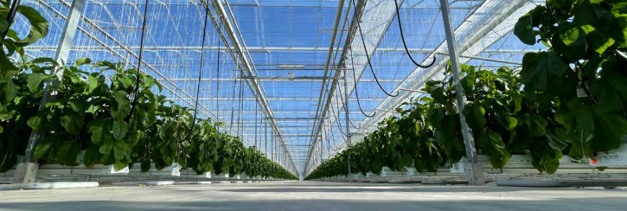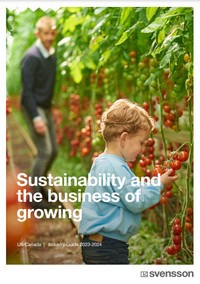Extreme weather records fell by the dozen in 2022. They included heat wave days in India, floods in Europe, and a heat dome in the Western United States that broke all-time temperature records.
But when screen supplier Svensson took the pulse of the response from horticulture consumers and policy makers to environmental challenges for a new report, it found that despite the shocking headlines, there is a parallel and more favorable climate developing. "There are signs that a long-awaited response, from finance and policy makers in particular, is making itself felt."

The Svensson guide 'Sustainability and the business of growing' looks at the U.S. and Canada and catalogs an ongoing shift in awareness among consumers (two thirds of whom are now looking to food vendors to do more on sustainability). Investors are with some regularity committing sums greater than US $100 million to horticultural projects, the report found. Canada has seen an astonishing CAN $4 billion invested in Agtech startups since 2019.
And if policy plans were weather, there would be a huge and undeniably helpful trade wind blowing in across the U.S. industry right now. The 2022 Inflation Reduction Act will impact indoor growers across the country. Raising US $738 billion in total, and with $391 billion earmarked for climate and energy spending, the act is also boosting a new generation of growers, owners and investors. They want to build sustainability into their operations from the foundation to the gutters.
Take this anecdote from a Canadian greenhouse constructor: “I was in a meeting with a management team, and the investors were there, and they were talking about where they would site new greenhouses,” he recalls. “They wanted each site to be within 150 miles of the distribution center and the reason they gave was that this was within a battery charge for the delivery trucks.”
It’s only a snapshot, but he said there was total agreement in the room. Attitudes are shifting.
Inflation Reduction Act
It is estimated that the Inflation Reduction Act could stimulate close to a trillion dollars of infrastructure spending from government and the private sector.
“For clean energy, sustainable food production and food security, it provides for tax spreading, but also for cash incentives,” says Bob Gunn of Seinergy, who advises greenhouse owners on grid, and off-grid electricity supply options. “It’s finite, but there is almost 400 billion dollars available,” says Gunn.
He adds that Controlled Environment Agriculture has a major role to play in responding sustainably to the threat from climate change.

“Especially in California, the soil is drying up,” he says. “By covering it you can control the environment and use much less water. And heat is another thing. It is too hot to grow in many places, but by using shade screens you can control that.”
Svensson’s guide Sustainability and the business of growing, US Canada 2023, can be downloaded free of charge here.
